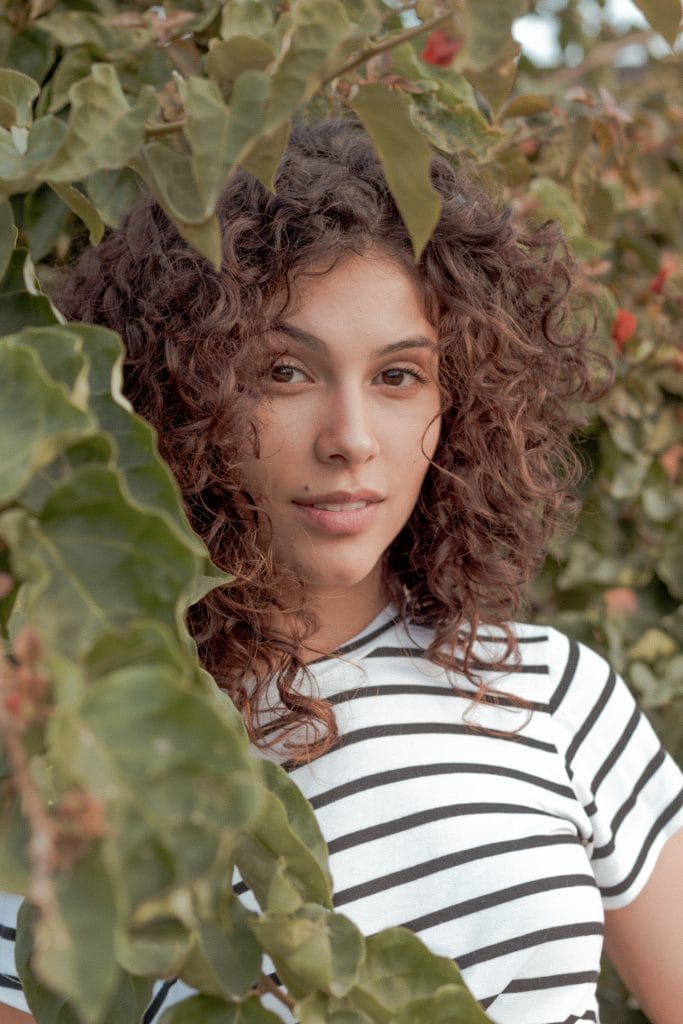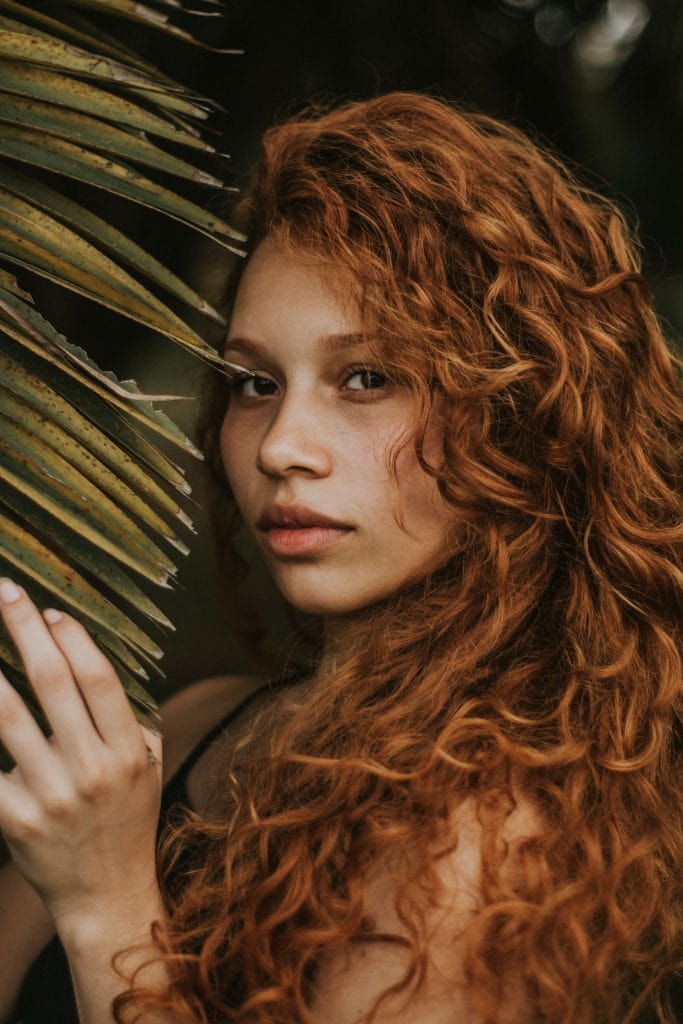
Photo by Gisela Carolina on Unsplash
Caring for your hair can be a difficult task, especially if you’re not really sure what kind of hair you actually have.
Even though you might think you’ve got it down, you might not actually know your hair type. There’s more to it than curly, wavy, or straight, and thick, medium, or thin.
If all of that has you second-guessing every hair-related decision you’ve ever made in your life, don’t worry! I’ve put together a primer for you covering the four questions to determine your hair type. Keep reading to find out what they are, as well as how to answer them.
Table of Contents
1. What is Your Hair Texture?

If you have straight hair, you probably have a pretty good idea of which hair texture you have. However, if your hair is wavy, curly, or kinky, determining what type of hair you have can be more difficult.
This is especially true if you have multiple hair textures going on–which, yes, is a real thing! (In fact, I have it myself!)
So, how do you determine your exact hair type(s), anyway?
Well, for starters, it’s a good idea to familiarize yourself with the different hair types out there. There are four in total: Type 1 (Straight), Type 2 (Wavy), Type 3 (Curly), and Type 4 (Kinky).
Each hair type also has three sub-categories, which are distinguished by letters from A-C. This article does a great job of breaking down each hair type and subtype. It also talks a bit about how to care for each type. (This article and this article also provide helpful images of each hair type.)
As mentioned above, it’s important to keep in mind that your hair might fall into two or more of the hair types and subtypes. Therefore, you may find yourself with multiple different needs to take care of. (For example, my hair is mostly 3A curls, but also has some 3B curls in the bottom layers; furthermore, the topmost layer is a bit more wavy–I’d say a mix between 2B and 2C. Needless to say, my hair needs a lot of attention!)
Once you’ve figured out your hair texture, it’s time to figure out your hair’s coarseness!
2. Is Your Hair Fine or Coarse?

Before we start this section, I’m going to tell you a fun but important fact that you may not have come across before: Hair coarseness or fineness actually refers to the diameter of each individual hair strand, not how many strands actually grow out of your head (i.e. hair density)! Confusing, right?!
The easiest way to determine your hair’s coarseness is to pluck one strand of hair from your head and place it next to a piece of thread. If the strand is the same width as the thread, then your hair is medium. If it’s thicker, then your hair is coarse, and if it’s thinner, then your hair is fine.
Usually, the finer your hair is, the more breakage-prone it is. Also, fine hair gets weighed down by products more easily. However, your hair might be an exception to the latter rule if it’s very dense (i.e. thick), like mine–something which we’ll get into next.
So, you may have to do some experimenting to find out what kinds of products work best for you. After all, there is no one-size-fits-all when it comes to hair!
3. Is Your Hair Thick or Thin?

Okay, now it’s time to talk about hair thickness. As you probably remember, the hair’s thickness refers to its density. Furthermore, density refers to how many strands there are growing out of your head.
If you can see a lot of your scalp, then it probably means that your hair is thin.
If you can’t see much of your scalp, then it’s likely that your hair is thick.
Finally, if some scalp is visible, then it your hair is probably of medium thickness.
Another fun fact: hair thickness doesn’t correspond with hair coarseness. Therefore, for example, it is totally possible to have fine, thick hair, or coarse, thin hair. The former will usually appear more voluminous, while the latter will usually appear to be flatter. The more you know!
When it comes to hair products, those with thicker hair can usually handle heavier formulations. However, those with thinner hair should try something a little lighter. But, as mentioned before, there are always exceptions! So, it’s impossible to predict exactly what’ll work for someone without actually seeing and/or examining their hair.
4. How Porous is Your Hair?

Hair porosity isn’t something that is talked about frequently, but it’s definitely important!
Hair porosity refers to how much moisture your hair can absorb and retain. The less porous your hair is, the healthier and more resistant it is to moisture and processing. Less porous hair is also more breakage-resistant.
Porosity is usually determined by genetic factors. But, external factors –e.g. sun exposure, chemical processing, and heat styling — can have an effect as well.
To determine how porous your hair is, use one of the following two methods:
For the first method, pluck some strands of just-washed, towel-dried hair from your head. Next, place them in a bowl of water for a couple of minutes. If the hairs float, then your hair has low porosity. If they sink, then your hair has high porosity.
For the second method, grab a single strand of hair between your thumb and index finger. Then, run your fingers up and down the strand. If it feels smooth, then your hair has low porosity. If it feels bumpy, then your hair has high porosity.
So, did our guide to finding your hair type help?
So, there you have it–four easy ways to determine what kind of hair you have!
Now, you should be able to make better-informed choices about things like styling, dyeing, and processing your hair. (Although, if you’re planning to make a big change(s) to your hair routine, it’s a good idea to run it by your stylist, as they’ll be able to give you first-hand information on what’ll work best for you.)
Plus, if you want to learn more, check out the sources I used for this article, which are listed below:
Sources/Further Reading
- Simple Hair Care Tips for Different Hair Types, via Hers
- Curly Hair Type Guide, via Curls.biz
- Hair Types, via Naturally Curly
- How To Determine Your Hair Type, Plus Which Products Will Give You Your Most Luscious Locks, via Bustle
- Fine, Normal, and Coarse Hair: Why Width Matters, via Naturally Curly
- Hair Porosity, via Naturally Curly
- All About Porosity, via Ouidad
What do you think?
So, what kind of hair do you have? Did you find this guide helpful? Did it teach you something you didn’t know before?
Let me know in the comments!
